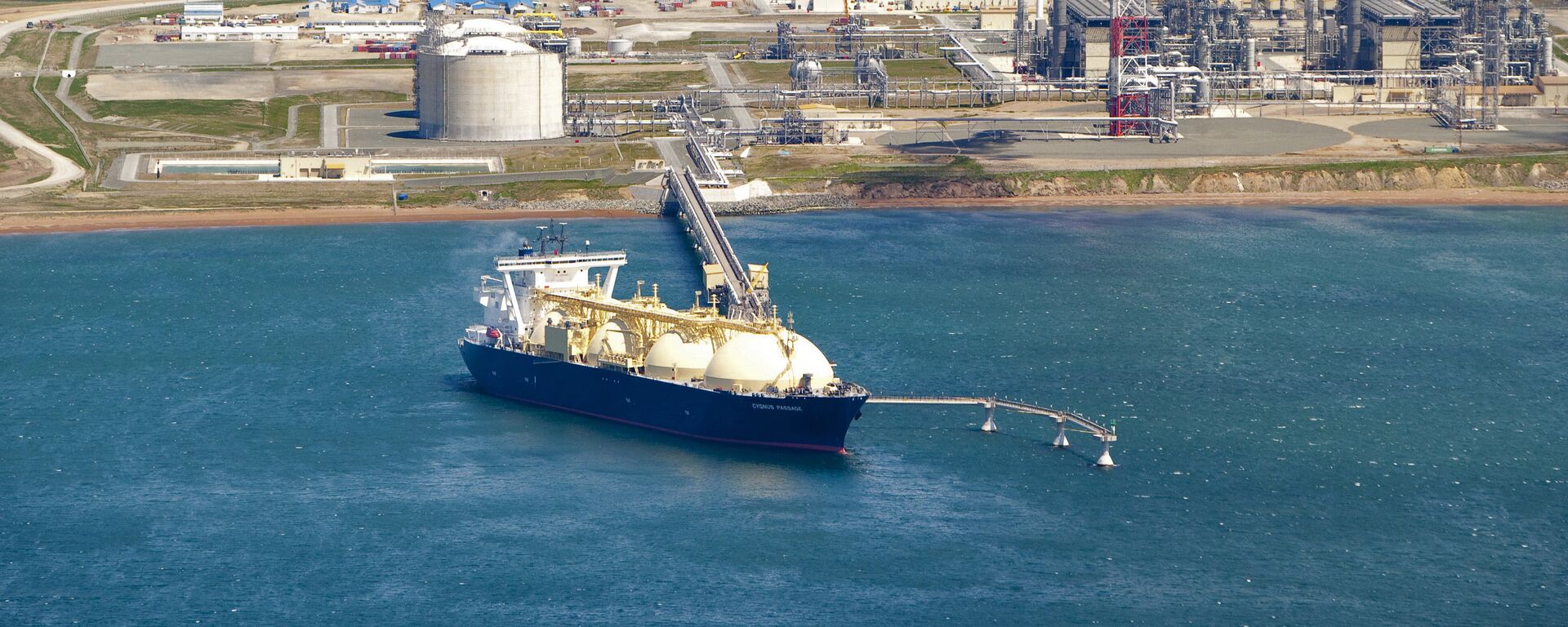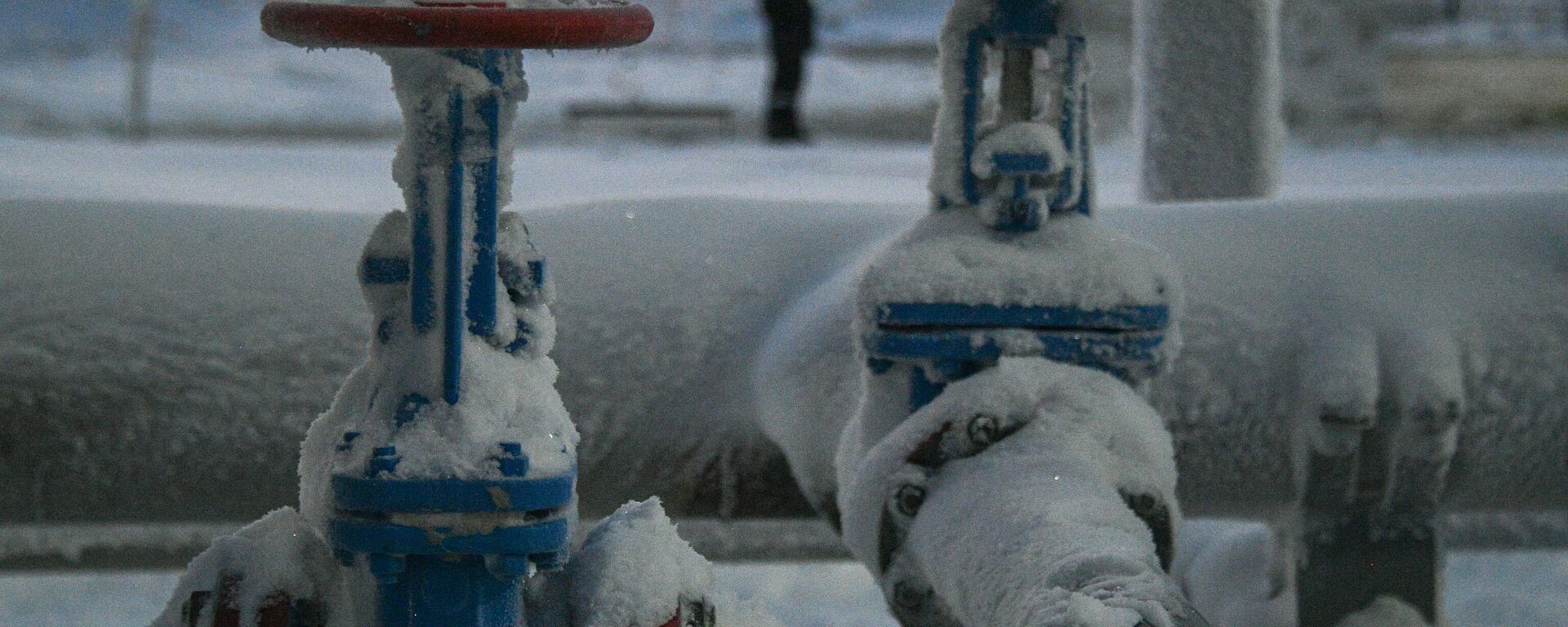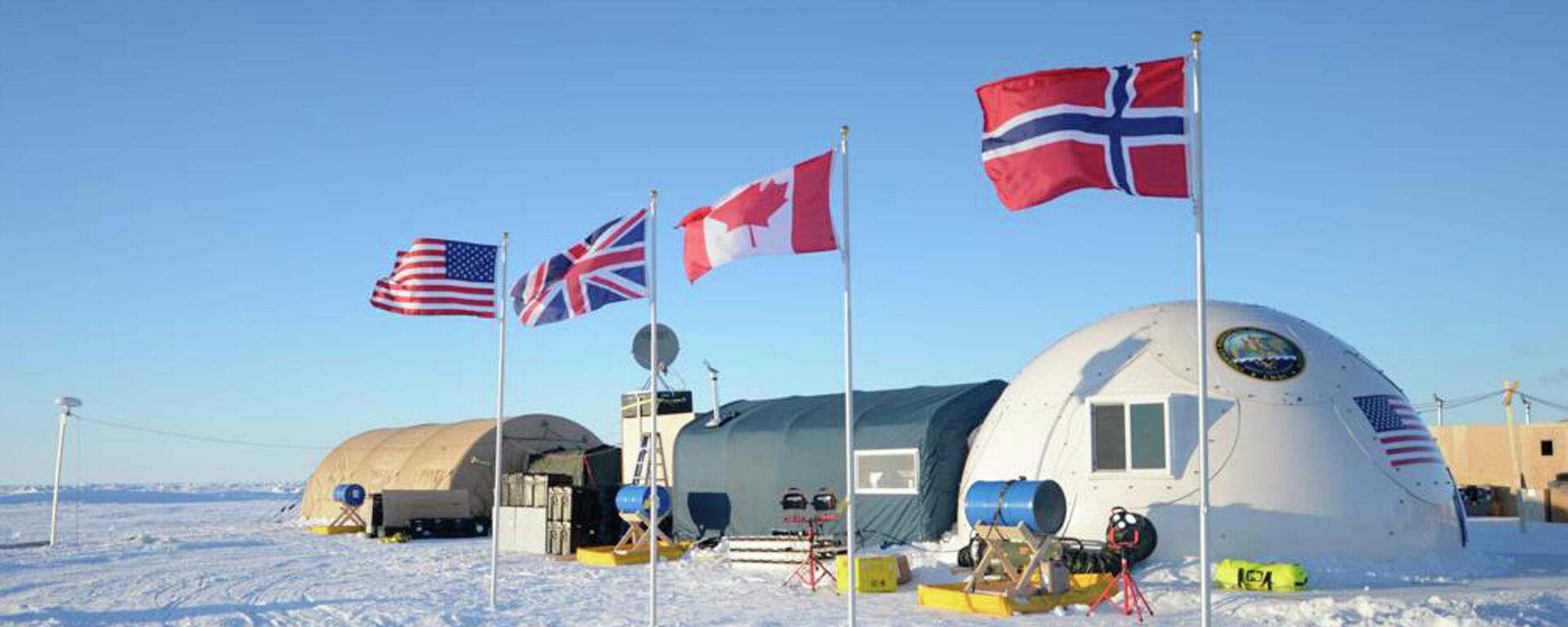Second to None: Arctic LNG-2 to Boost Russia's Share in World Energy Market
15:00 GMT 22.07.2023 (Updated: 15:56 GMT 22.07.2023)
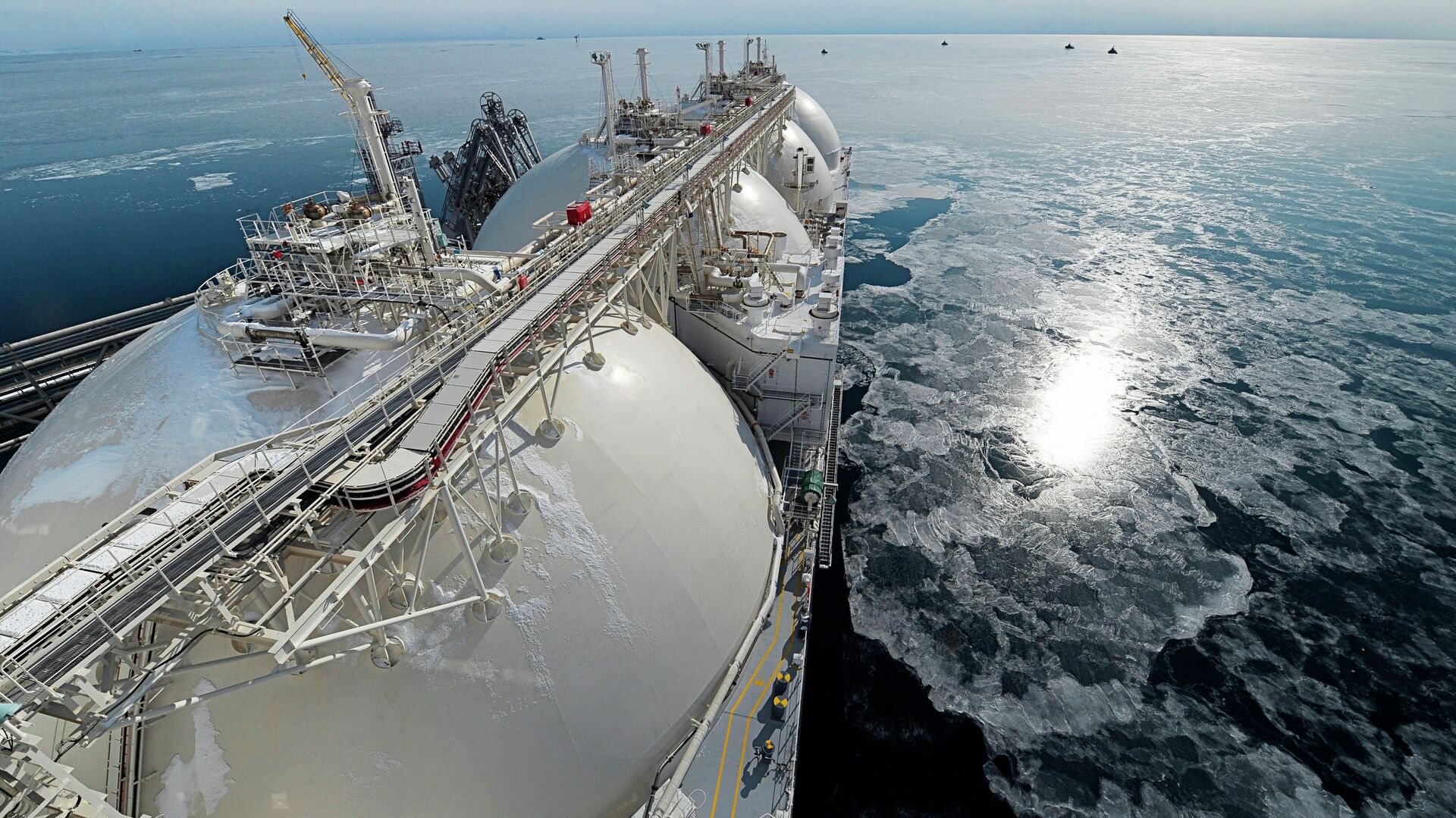
© Sputnik / Sergey Guneev
/ Subscribe
Russia's Novatek is pushing ahead with the Arctic LNG-2 project to considerably step up production of liquefied natural gas (LNG), enhancing the nation's global market share to 20%. What's more, the project has no analogues in the world.
Russian President Vladimir Putin green-lit the departure of the first finished production line for liquefying natural gas on a gravity-based platform under the Arctic LNG-2 project in Murmansk on July 20.
The platform, which weighs over 600,000 tons, will be towed along the Northern Sea Route to Utrenneye field on the Gydan Peninsula in the Yamal-Nenets Autonomous Area. When the project's implementation is completed, Arctic LNG-2 will encompass three liquefaction trains producing a total of 19.8 million tons per annum (MTPA) of LNG and up to 1.6 MTPA of stable gas condensate (SGC).
"The Arctic LNG-2 is a unique project for a number of reasons," Nikita Lipunov, an analyst at the Institute for International Studies, MGIMO-University, told Sputnik. "Firstly, this is the world's first project for serial production of LNG lines based on gravity-based structures (GBS). The use of this construction technology, coupled with the large-scale localization of the production of equipment and materials in Russia, will ensure a low cost of production thus increasing the competitiveness of Russian LNG in the world market."
"Secondly, Arctic LNG-2 meets high environmental standards, since using GBS does not require building a liquefaction plant at the production site: LNG lines will be towed from the production site in the Murmansk region to the Yamal field along the Northern Sea Route (NSR). This reduces the burden on the environment. Finally, the production of LNG in Arctic conditions improves the energy efficiency of the project, resulting in the reduction of greenhouse gas emissions per ton of LNG by more than 30% below the industry average. This is a serious competitive advantage for Russia amidst the transition to a low-carbon economy."
The expert added that the successful commissioning of the Arctic LNG-2 will increase the total volume of LNG produced by Russia which will account for over half of the load of the NSR by 2030, according to the Russian government. On top of that, Arctic LNG-2 facilitates the development of the Russian Arctic economy: hundreds of Russian enterprises are involved in the production of LNG lines with over 80,000 jobs having been created throughout the country.
What Will Arctic LNG-2 Bring to Russia's LNG Triad?
Arctic LNG-2 is Russia's third LNG project. First, the production of LNG was launched in Sakhalin Island in February 2009. The Sakhalin-2 project boasts an annual LNG production capacity of 9.6 million tons. It stepped up production to 11.5 million tons of LNG in 2022.
Second, in December 2017, the Yamal LNG project was kicked off. The Yamal plant's output capacity is around 16.5 million tons per year. However, in 2022 this figure mounted to 21 million tons.
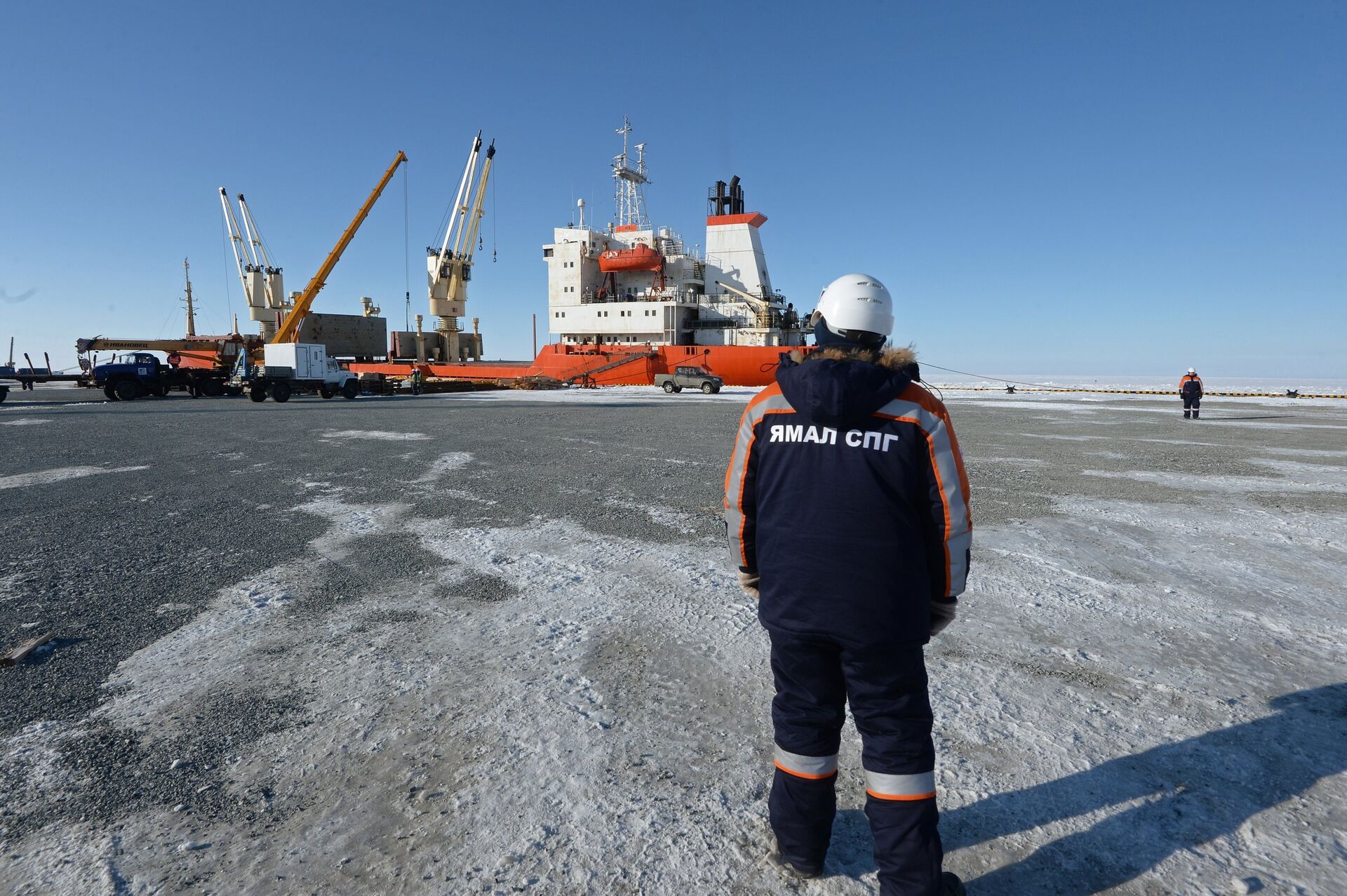
Liquefied natural gas (LNG) plant construction in Yamal, Russia.
© Sputnik / Mikhail Voskresenskiy
/ When completed, the Arctic LNG-2 would add to this volume around 19.8 million tons per year, or, in other words, 27 billion cubic meters of gas annually, emphasized Konstantin Simonov, the director-general of the National Energy Security Fund.
"In 2022 Russia supplied about 40 billion cubic meters of liquefied gas to world markets," Simonov told Sputnik. "Three phases of the plant will produce 27 billion cubic meters of gas. One line, which has now begun its movement towards the Gydan Peninsula, will produce a little more than 9 billion cubic meters of gas. Here you can estimate the volume of growth of our presence in the world market, which we will receive thanks to this project."
One should bear in mind that Russia also supplies pipeline gas making the country one of the largest energy producers. Despite Western energy embargo slapped on Moscow after the beginning of the special military operation in Ukraine, Russia still supplies more gas to world markets in total in pipeline and liquefied form, per Simonov. Nonetheless, the diversification of supply chains is a significant task for Russia, he stressed.
Why Did Russia Launch LNG Production?
"First, why is it necessary to be present in the market? Because this is an emerging market. Why not come in then?" Stanislav Mitrakhovich, expert of the National Energy Security Fund and researcher at the Finance University under the government of the Russian Federation, told Sputnik.
The second reason is that Russia has found itself cut off from the European market to a large extent, according to Mitrakhovich. Russia's pipeline gas deliveries to Europe are currently limited to flows via Ukraine and via the European string of TurkStream. Per S&P Global, total Russian pipeline exports to Europe (excluding Moldova) in May 2023 were down by 11% compared with April and 78% down year-on-year.
"There is no guarantee that it will be possible to reach an agreement with Europe on the resumption of large-scale pipeline gas supplies," continued the expert. "Although there are options of how this could be done – for example, through the Turkish [gas] hub – so far these are just hypotheses. Therefore, it is necessary, probably, to switch, including to a larger export of liquefied gas, improve our technologies, substitute imports, and build new plants. Therefore, in the current situation, the role of LNG is even more important for Russia than it was before 2022."
How Could Arctic LNG-2 Enhance Russia's Competitiveness & Security?
Per Lipunov, Arctic LNG-2 will substantially boost Russia's position in the global natural gas market.
"The major consumers of LNG are Asian countries - China, Japan, South Korea, India," the expert said. "Spain and France are among the main European importers of Russian LNG; they continue to receive LNG from the Russian Arctic. The capacities of Arctic LNG-2 will ramp up the volume of deliveries to these countries, including via the NSR, which will help Russia increase its share in the global gas market and successfully overcome the stage of reconfiguration of gas exports in the current conditions."
Another advantage of LNG is its flexibility, according to Simonov: "That is, it is clear that the pipe leaves point A and strictly to point B the methane carrier can arrive at any port. There are opportunities to receive LNG," the expert stressed.
For comparison's sake, pipeline routes lack this flexibility. The Nord Stream sabotage – carried out by US and Norwegian operatives, as per Pulitzer-Prize winning journalist Seymour Hersh – demonstrated that the gas pipeline infrastructure running through foreign waters is vulnerable for attacks. What's worse, it turned out to be impossible for Russia's law enforcement authorities and specialists to conduct a thorough investigation into the matter since Moscow has so far been denied access to the site under various pretexts.
On July 11, 2023, at the request of Russia, an open meeting of the UN Security Council was convened on the situation with the investigations at the Nord Stream 1 and Nord Stream 2 pipelines. On the eve of the meeting, the permanent missions of Denmark, Sweden and Germany to the UN circulated a letter stating that there were no obstacles to visiting the sites of the explosion. However, the matter has yet to be sorted out.

11 February 2023, 15:39 GMT
Why Does Russia Race Against Time Exploring New Opportunities?
Western sanctions created new challenges for Novatek, which is the operator of this project, according to Konstantin Simonov.
Per Simonov, the main part of Arctic LNG 2's first line was produced before sanctions hit Russia's LNG industry. Novatek used the technologies of the German company Linde. Other foreign suppliers, including American company Baker Hughes, were also involved in the project. The expert noted that in the wake of the sanctions Baker Hughes rejected to supply the full number of turbines needed for this project.
"Well, judging by the fact that the first line is installed, we can congratulate Novatek on finding technological answers to these challenges. The second and third lines of the plant will be more difficult to build, again, because it will have to be done under full-scale sanctions," Simonov noted.
Still, instead of crippling Russia's industrial development, Western sanctions have become the trigger for the boost of domestic producers and technologies, according to Lev Voronkov, doctor of historical sciences, professor at the European Studies Institute, MGIMO-University.
"A few years ago, in one of my articles, I said that Russia was being pushed and thereby placed in unique circumstances to become the undisputed technological leader in the development of hydrocarbon resources in the Arctic," Voronkov told Sputnik. "It is one thing to extract oil at the bottom of the Gulf of Mexico with existing technologies. Another thing is [to work] in the Arctic. These are completely different things. And if these restrictions continue, Russia will be forced to create unique technologies and it is already creating them."
Sputnik's interlocutors highlighted that Russia should waste no time in tapping new options and developing new technologies, since the LNG market is highly competitive.
"Our major competitors are already producing substantially more [LNG than Russia]," remarked Simonov. "For example, Qatar, a key LNG producer, produced 115 billion cubic meters of gas last year. There are also two countries that already produce more than 100 billion cubic meters of gas - these are Australia and the US. So we see that we have someone to compete with. (…) Neither the US nor Qatar intend to slow down. Qatar has already announced quite ambitious LNG projects. So the competition will be quite serious. I hope that Russia will join this competition 'fully armed'."


